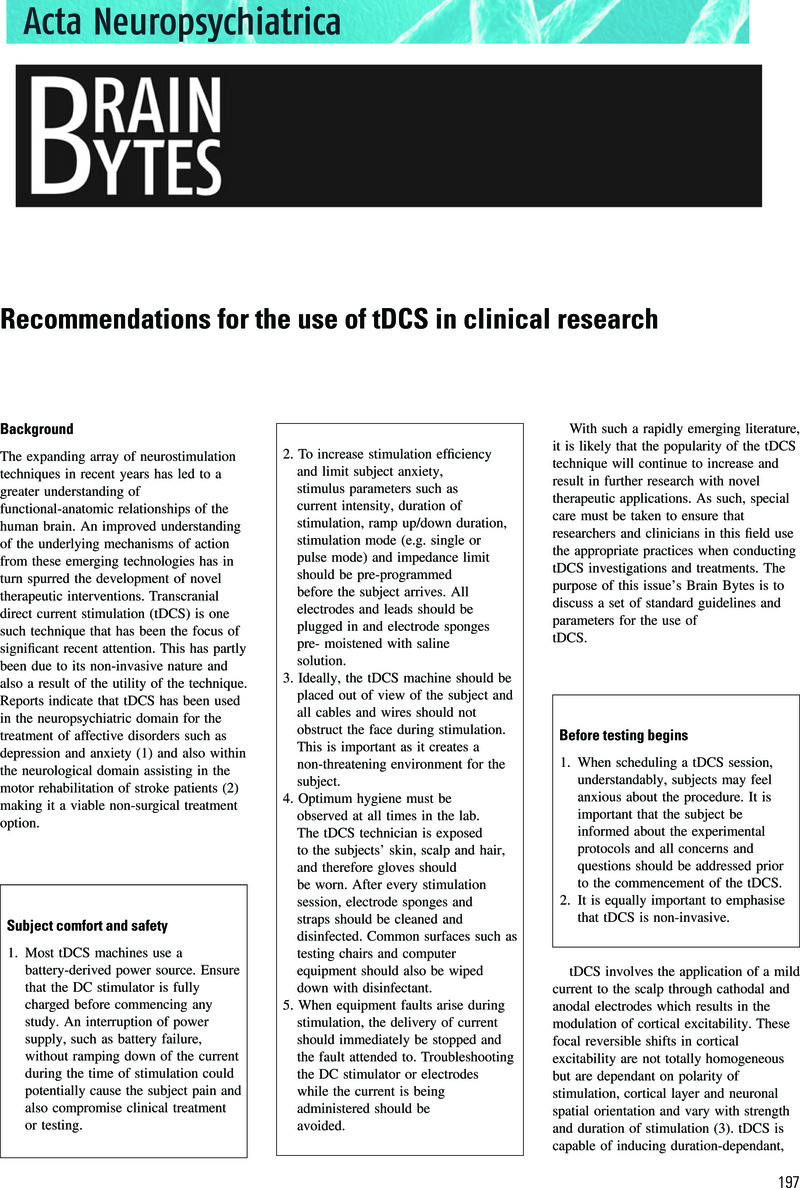Crossref Citations
This article has been cited by the following publications. This list is generated based on data provided by Crossref.
Shekhawat, Giriraj Singh
Stinear, Cathy M.
and
Searchfield, Grant D.
2013.
Transcranial Direct Current Stimulation Intensity and Duration Effects on Tinnitus Suppression.
Neurorehabilitation and Neural Repair,
Vol. 27,
Issue. 2,
p.
164.
Nakagawa, Kei
Mochizuki, Hideki
Koyama, Soichiro
Tanaka, Satoshi
Sadato, Norihiro
and
Kakigi, Ryusuke
2016.
A transcranial direct current stimulation over the sensorimotor cortex modulates the itch sensation induced by histamine.
Clinical Neurophysiology,
Vol. 127,
Issue. 1,
p.
827.
Balconi, Michela
Pala, Francesca
and
Crivelli, Davide
2016.
Effetto della neuromodulazione corticale (tdcs) nell'healthy ageing. Correlati eeg e comportamentali.
RICERCHE DI PSICOLOGIA,
p.
45.
Morales-Quezada, Leon
2017.
Noninvasive Brain Stimulation, Maladaptive Plasticity, and Bayesian Analysis in Phantom Limb Pain.
Medical Acupuncture,
Vol. 29,
Issue. 4,
p.
220.
Matsumoto, Hideyuki
and
Ugawa, Yoshikazu
2017.
Adverse events of tDCS and tACS: A review.
Clinical Neurophysiology Practice,
Vol. 2,
Issue. ,
p.
19.
Antal, A.
Alekseichuk, I.
Bikson, M.
Brockmöller, J.
Brunoni, A.R.
Chen, R.
Cohen, L.G.
Dowthwaite, G.
Ellrich, J.
Flöel, A.
Fregni, F.
George, M.S.
Hamilton, R.
Haueisen, J.
Herrmann, C.S.
Hummel, F.C.
Lefaucheur, J.P.
Liebetanz, D.
Loo, C.K.
McCaig, C.D.
Miniussi, C.
Miranda, P.C.
Moliadze, V.
Nitsche, M.A.
Nowak, R.
Padberg, F.
Pascual-Leone, A.
Poppendieck, W.
Priori, A.
Rossi, S.
Rossini, P.M.
Rothwell, J.
Rueger, M.A.
Ruffini, G.
Schellhorn, K.
Siebner, H.R.
Ugawa, Y.
Wexler, A.
Ziemann, U.
Hallett, M.
and
Paulus, W.
2017.
Low intensity transcranial electric stimulation: Safety, ethical, legal regulatory and application guidelines.
Clinical Neurophysiology,
Vol. 128,
Issue. 9,
p.
1774.
Folmli, Brookes
Turman, Bulent
Johnson, Peter
and
Abbott, Allan
2018.
Dose response of somatosensory cortex repeated anodal transcranial direct current stimulation on vibrotactile detection: a randomized sham-controlled trial.
Journal of Neurophysiology,
Vol. 120,
Issue. 2,
p.
610.
Shekhawat, Giriraj Singh
and
Vanneste, Sven
2018.
High-definition transcranial direct current stimulation of the dorsolateral prefrontal cortex for tinnitus modulation: a preliminary trial.
Journal of Neural Transmission,
Vol. 125,
Issue. 2,
p.
163.



